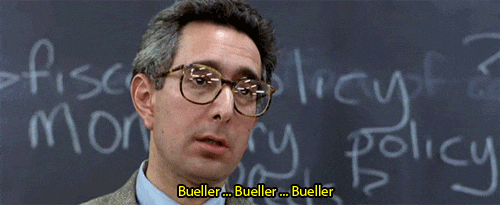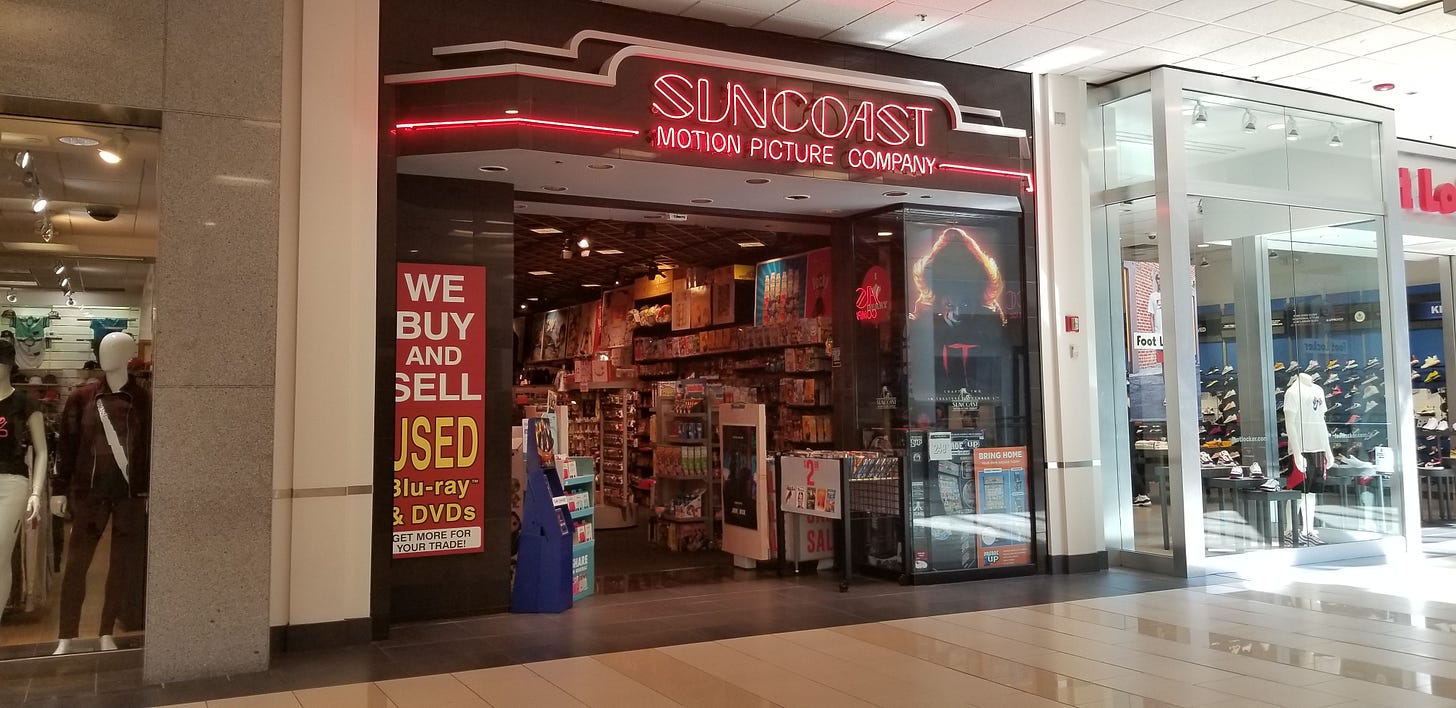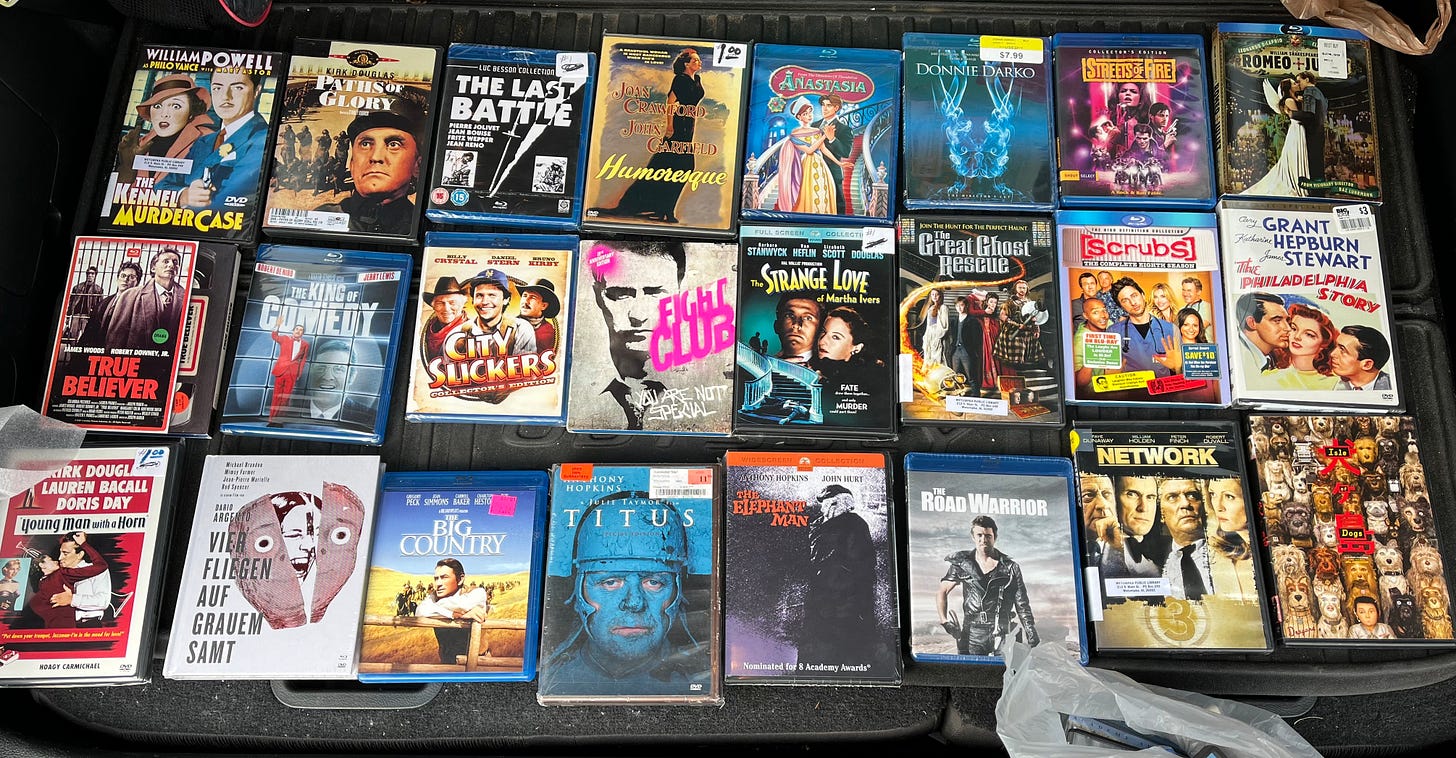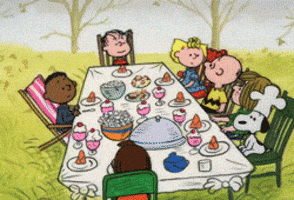Hello there!
Rounding out “The Case for Physical Media” trilogy, this week we’re diving into economics! You know, the class in high school that taught us supply and demand for a semester and then we learned about government! And we’re still putting that information to good use, right? Right?? We’ll know in a week whether this third installment will be The Rise of Skywalker or Return of the King. You be the judge.
Picture the last buffet you went to. You feel like it’s a bargain- all this food for a modest price. So, maybe you eat more than you normally would. You want to get your money’s worth, right? But you eat so much you feel sick. It’s not even that the food is particularly good. It’s fine, it’s adequate. There’s enough salt to make it edible.
Now think of some of the best meals you’ve ever had; the ones either you painstakingly cooked or someone cooked for you. You appreciated the effort that went into it. And the taste- you wanted to savor every bite. Maybe every flavor wasn’t to your liking, but you valued the experience. You still think about these meals from time to time.
Streaming is like the buffet. It’s a good way to get full, but you’re less likely to savor the experience.
Look, I’m not going to try and convince you that physical media is easier on your wallet than streaming. I COULD make that case, but it varies from person to person, and at the end of the day, it really comes down to your values.
Do you value the convenience of streaming? Of having a seemingly endless amount of “content” to fill your leisurely hours? Or, do you value the films themselves, the people that made them, and the medium in which they were created? It’s not a trick question, and it’s also not binary. I enjoy streaming as much as the next person, but there needs to be a balance if we’re to have a healthy film ecosystem.
There’s no denying that the cost of streaming for the average consumer has steadily increased over the last few years. Chalk it up to inflation, whatever. You sign up for X streamer because it’s got that show that everyone is crowing about. Maybe they get you with the 7 day free trial or 3 months at an introductory price. You watch the show and then you forget to cancel. There’s another month or two that they’ve got you.
But it all boils down to: how many streaming subscriptions do we actually need? Most Americans have three to four, but I would argue we only need one. One at a time. One for the show you’re watching, and then the occasional movie. Rent or buy the rest. The ubiquity of streaming has not only devalued the films from a monetary sense, but also a cultural sense. Our collective mindset has shifted to one of: “How many films and shows can I have access to for the lowest price?”
In a time, not so long ago, films had an incredibly lucrative revenue stream apart from theatrical: physical media. A film could underperform at the box office, yet still achieve profitability through video sales and rentals. A few films such as: Donnie Darko, The Big Lebowski, Fight Club, and Scott Pilgrim vs. The World were all made solvent through DVD sales.
This business model that was dominant from the late 70s until the early 2010s created an ecosystem that was much more diverse as far as budget ranges and subject matter. On the financing side, a film could cover most, if not all, of its budget through foreign pre-sales of the various territories in the once-robust physical media market. Now, with the shift to a digital and streaming ecosystem, all of that has changed.
DVD and Bluray sales have seen a sharp decrease over the last decade. Video rental stores are virtually non-existent, save for those fighting the good fight in some of the major cities. For filmmakers, the once-coveted streaming deals are paltry compared to the previous revenues from physical media. Nothing is free, though we as consumers have been trained to believe that some things are.
To be fair, streaming is not entirely to blame. The digital revolution of cameras and film equipment has brought the cost of production down, thereby making it easier and more accessible to produce a film. The result, however, has been a glut in the market of lower budget, and oftentimes low-quality films. It’s increasingly difficult to rise above the noise level in an overstuffed market.
Independent filmmakers, like independent musicians, would be wise then to embrace a business model that prioritizes physical media and in-person experiences over streaming. And we, as consumers, can support these filmmakers by buying physical whenever possible. But times are tough and Blurays can be expensive. Let’s dig into that.
Saving money is good. It’s responsible. But we have to be careful about what our money goes toward. We vote with our dollars, as they say. Between theatrical and physical media, most of us can’t spend hundreds of dollars per month on movies. Do we have to? Buy one movie a month that you love. Rent the rest. Let’s say that’s $30 to buy a new release and then $4 per rental at eight rentals. That’s $62 per month. It’s not nothing, to be sure. But you told those filmmakers in a very significant way that you value their work.
Regarding older releases (a year or more), you can pick up some new Blurays from anywhere between $10-$20. Catch them on a Black Friday sale or something similar and you can grab them for a steal. The higher-end boutique labels even run sales multiple times a year. Criterion does a 50% off sale at least twice a year (they’ve got one going on now until December 2). But that’s still too much, you might say. Money is tight. Hey, that’s fair. I’ve got two words for you: thrift store.
Over the last few years I’ve picked up some gems at the thrift store. Even in my little town with only a handful of stores and not much inventory. You might have even better luck in a larger city, but you’ll likely have more competition from other thrifters. I once lucked out on this library in a tiny town purging their DVD and Bluray collection to make room for new stuff. They were selling them at 50 cents a piece, and some were still sealed! I bought as much as I could carry.
What if your budget is $0? Libraries are a great resource to check out DVDs and Blurays- especially in the larger metropolitan areas. The JCLC for the Birmingham area basically had any movie that I could think of, even some more obscure ones. And if they don’t have it, you can request that they get it!
We have to re-train our brains to look at physical media not just as an expense, but as an investment; investing in our cinematic education and the future of the medium. The focus shouldn’t be on the quantity of material, but on quality. Returning to the buffet analogy, we have to be careful what we consume- what sorts of “food” we’re putting into our body. They call it binge-watching for a reason.
Speaking of over-eating, and for those living in the U.S., have a happy Thanksgiving! See you soon.










The streamers are guilty of the same mindset that most of 21st Internet business has been based on: treating whatever they sell as a collective commodity and not individual items of value, and hiding the good things in among crap. Whereas with a DVD or Blu-Ray purchase you're only getting the movies and TV shows you WANT to see (plus additional related material in some cases), and you feel more satisfied with that (or I do).
And, yes, I know the film studios have always been guilty of mistreating what they make, but that's where the critics and fans exist to point out their mistakes.
Fuckin' hell can we not make every little contrarian thing I do into a movement. I'm gonna start picking my nose in public or something, try making a thing of that.
Seriously though didn't make it through the whole argument, but yes to it. Streaming sucks. Owning things is nice.